1,7-Dimethylxanthine
Synonym(s):Paraxanthine;1,7-Dimethylxanthine;2,6-Dihydroxy-1,7-dimethylpurine;1,7-Dimethyl-1H-purine-2,6-dione;1,7-DIMETHYL-3,7-DIHYDRO- 1H-PURINE-2,6-DIONE
- CAS NO.:611-59-6
- Empirical Formula: C7H8N4O2
- Molecular Weight: 180.16
- MDL number: MFCD00005727
- EINECS: 210-271-9
- SAFETY DATA SHEET (SDS)
- Update Date: 2024-12-18 14:15:30
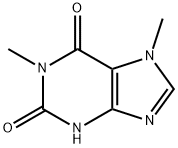
What is 1,7-Dimethylxanthine?
Description
Paraxanthine is an inhibitor of phosphodiesterase 9 (PDE9) and an antagonist of adenosine receptors A1 and A2 (Kis = 35 and 22 μM, respectively in equine forebrain tissues). It is the main metabolite of caffeine in humans, making up 80% of the three dimethylxanthine metabolites produced by caffeine demethylation. Paraxanthine increases locomotor activity and counteracts adenosine receptor agonist-induced motor depression in rats not habituated to caffeine. At a dose of 30 mg/kg, paraxanthine induces a significant increase in striatal cGMP and extracellular striatal dopamine concentrations in vivo. It also promotes wakefulness and increases locomotor activity and core temperature in narcoleptic transgenic mice without increasing behavioral anxiety.
Chemical properties
Off-White to Pale Yellow Solid
The Uses of 1,7-Dimethylxanthine
1,7-Dimethylxanthine has been used for the quantification of caffeine by high-performance liquid chromatography (HPLC).
The Uses of 1,7-Dimethylxanthine
adenosine receptor agonist, CNS stimulant
The Uses of 1,7-Dimethylxanthine
Paraxanthine is an adenosine receptor ligand and a major metabolite of caffeine.This compound is a contaminant of emerging concern (CECs).
What are the applications of Application
Paraxanthine is an adenosine receptor ligand and a major metabolite of caffeine
Definition
ChEBI: 1,7-dimethylxanthine is a dimethylxanthine having the two methyl groups located at positions 1 and 7. It is a metabolite of caffeine and theobromine in animals. It has a role as a central nervous system stimulant, a human xenobiotic metabolite, a human blood serum metabolite and a mouse metabolite.
General Description
Paraxanthine is a major plasma and urinary metabolite of caffeine. This xanthine derivative is, along with caffeine, a central nervous system stimulant. This Snap-N-Spike? reference solution is applicable for caffeine quantitation in clinical toxicology or urine drug testing by LC-MS/MS or GC/MS.
Biochem/physiol Actions
Adenosine receptor ligand; major metabolite of caffeine
Safety Profile
An experimental teratogen. Mutation data reported. Whenheated to decomposition it emits toxic fumes of NOx.
Properties of 1,7-Dimethylxanthine
| Melting point: | 294-296 °C (lit.) |
| Boiling point: | 312.97°C (rough estimate) |
| Density | 1.3640 (rough estimate) |
| refractive index | 1.6700 (estimate) |
| Flash point: | 9℃ |
| storage temp. | room temp |
| solubility | ethanol: 0.6mg/mL |
| form | solid |
| pka | pKa 8.5 (Uncertain) |
| color | white |
| BRN | 197907 |
| Stability: | Store tightly sealed at RT |
| InChI | InChI=1S/C7H8N4O2/c1-10-3-8-5-4(10)6(12)11(2)7(13)9-5/h3H,1-2H3,(H,9,13) |
| EPA Substance Registry System | 1H-Purine-2,6-dione, 3,7-dihydro-1,7-dimethyl- (611-59-6) |
Safety information for 1,7-Dimethylxanthine
| Signal word | Warning |
| Pictogram(s) |
 Exclamation Mark Irritant GHS07 |
| GHS Hazard Statements |
H302:Acute toxicity,oral |
Computed Descriptors for 1,7-Dimethylxanthine
| InChIKey | QUNWUDVFRNGTCO-UHFFFAOYSA-N |
| SMILES | N1(C)C2=C(NC(=O)N(C)C2=O)N=C1 |
New Products
(S)-3-Aminobutanenitrile hydrochloride 4-Methylphenylacetic acid N-Boc-D-alaninol N-BOC-D/L-ALANINOL Tert-butyl bis(2-chloroethyl)carbamate 3-Morpholino-1-(4-nitrophenyl)-5,6-dihydropyridin- 2(1H)-one Furan-2,5-Dicarboxylic Acid Tropic acid S-2-CHLORO PROPIONIC ACID ETHYL ISOCYANOACETATE 2-Bromo-1,3-Bis(Dimethylamino)Trimethinium Hexafluorophosphate 4-IODO BENZOIC ACID 3-NITRO-2-METHYL ANILINE 1-(2,4-DICHLOROPHENYL) ETHANAMINE (2-Hydroxyphenyl)acetonitrile 4-Bromopyrazole 5,6-Dimethoxyindanone 2-(Cyanocyclohexyl)acetic acid 4-methoxy-3,5-dinitropyridine 1-(4-(aminomethyl)benzyl)urea hydrochloride 2-aminopropyl benzoate hydrochloride diethyl 2-(2-((tertbutoxycarbonyl)amino) ethyl)malonate tert-butyl 4- (ureidomethyl)benzylcarbamate Ethyl-2-chloro((4-methoxyphenyl)hydrazono)acetateRelated products of tetrahydrofuran
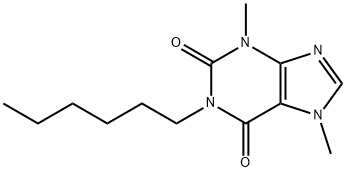
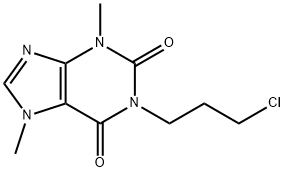

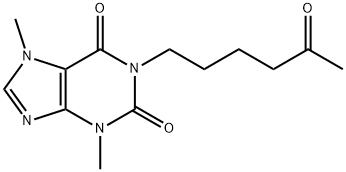
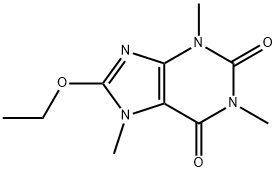
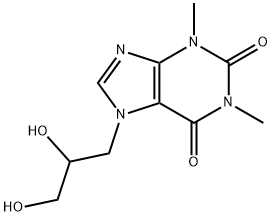

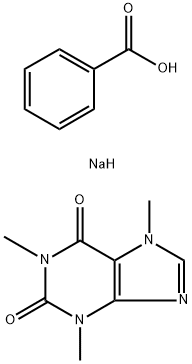
You may like
-
 1,7-Dimethylxanthine CAS 611-59-6View Details
1,7-Dimethylxanthine CAS 611-59-6View Details
611-59-6 -
 Caffeine Impurity F CAS 611-59-6View Details
Caffeine Impurity F CAS 611-59-6View Details
611-59-6 -
 1,7-Dimethylxanthine CAS 611-59-6View Details
1,7-Dimethylxanthine CAS 611-59-6View Details
611-59-6 -
 Paraxanthine solution CAS 611-59-6View Details
Paraxanthine solution CAS 611-59-6View Details
611-59-6 -
 1975-50-4 98%View Details
1975-50-4 98%View Details
1975-50-4 -
 2-HYDROXY BENZYL ALCOHOL 98%View Details
2-HYDROXY BENZYL ALCOHOL 98%View Details
90-01-7 -
 14714-50-2 (2-Hydroxyphenyl)acetonitrile 98+View Details
14714-50-2 (2-Hydroxyphenyl)acetonitrile 98+View Details
14714-50-2 -
 118753-70-1 98+View Details
118753-70-1 98+View Details
118753-70-1